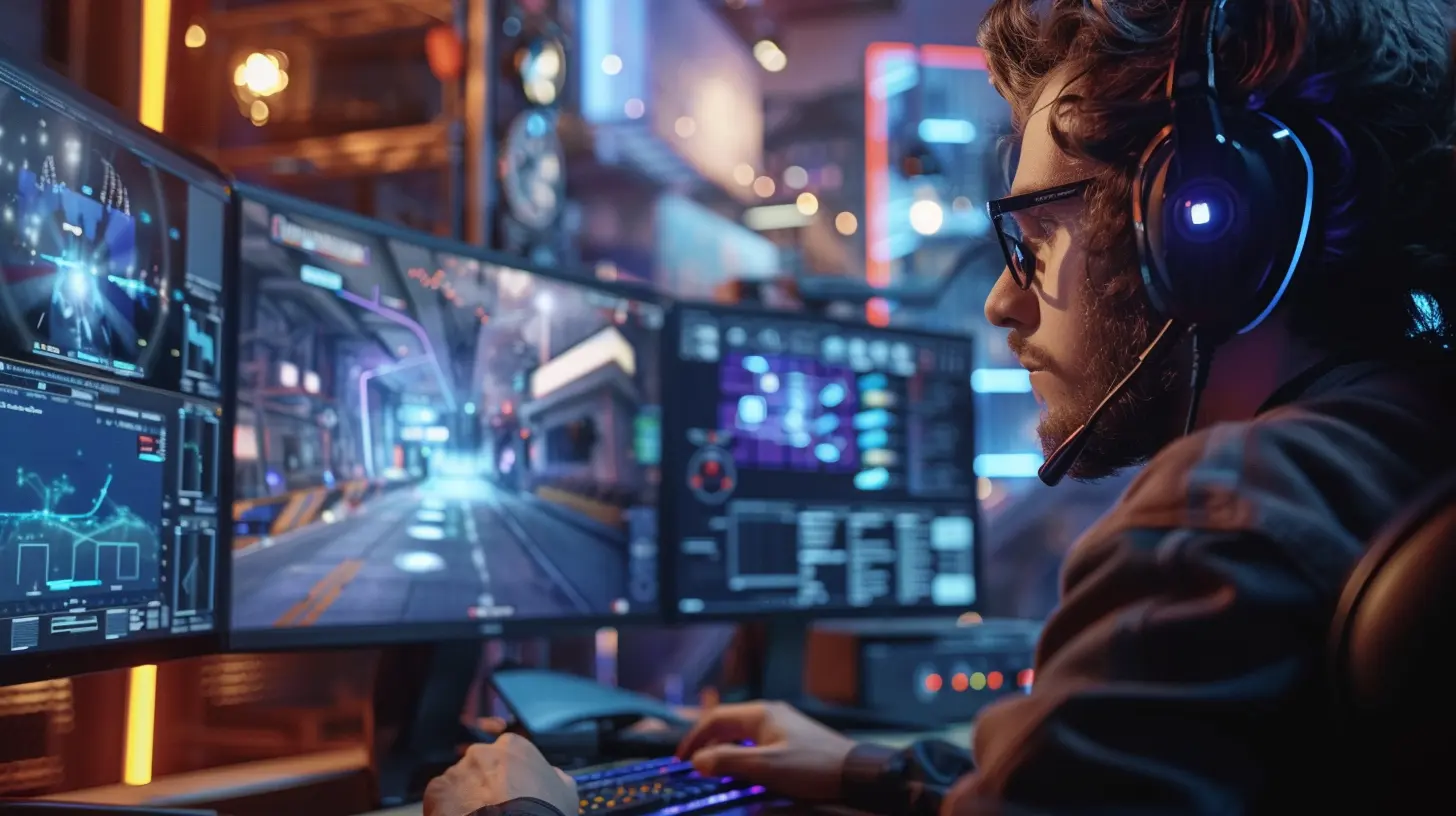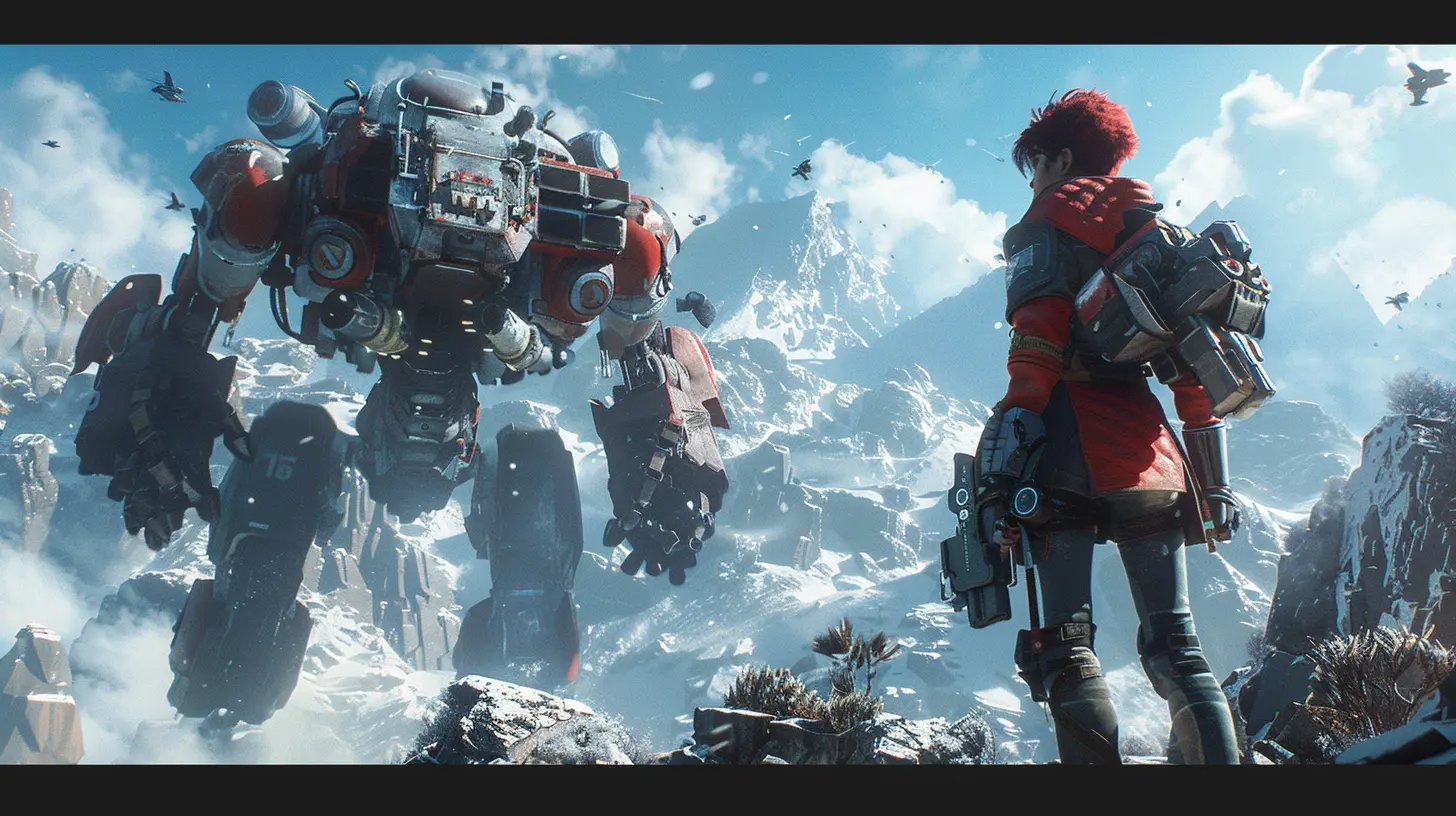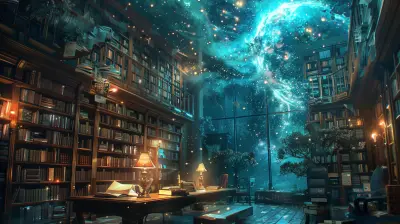Upcoming Features in Unreal Engine That Developers Shouldn’t Miss
25 June 2025
If you're a game developer or just someone who’s always keeping a curious eye on the latest in gaming tech, one thing’s certain: Unreal Engine is constantly evolving, and it’s doing so at breakneck speed. Unreal Engine has been the backbone of countless incredible games, but it’s not just for big studios anymore. With its constant innovation, this powerhouse of an engine ensures any developer—whether a AAA giant or a lone indie warrior—can create jaw-dropping worlds and experiences.
As Unreal Engine forges ahead, there’s a wave of upcoming features that you absolutely need on your radar. Trust me, you’re not going to want to miss out on what’s coming next. So buckle up, grab a coffee (or energy drink, no judgment), and let’s dive into what makes the next updates for Unreal Engine game-changing. 
A Quick Look at Unreal Engine: The Powerhouse of Gaming
Before jumping into the nitty-gritty, let’s appreciate what Unreal Engine already brings to the table. It’s not just an engine; it’s a toolbox stuffed with visually stunning graphics, smooth workflows, and tools that make even the craziest ideas seem achievable. Whether it’s lighting tech like Lumen or cinematic tools like Sequencer, Unreal Engine knows how to pack a punch.Okay, pep talk over. Let’s get into the juicy stuff—the new features on their way that might just blow your mind.
1. Nanite 2.0 – The Future of Virtualized Geometry
You’ve probably heard of Nanite, Unreal Engine’s virtualized geometry system that made static meshes insanely detailed without frying your graphics card. Think photorealistic details that somehow don’t bring your game to a slideshow. And guess what? Nanite 2.0 is on its way, and it’s even better.What’s New with Nanite 2.0?
Expect more flexibility in how you use Nanite. Unreal is optimizing it to handle even more complex assets, better animations, and more dynamic workflows. They’re making it easier for devs to integrate Nanite into projects without sacrificing performance. Imagine being able to throw hyper-realistic assets into your game and not having to constantly double-check if your FPS is tanking. A dream, right?For developers working on high-end games—or even expanding their horizon into VR—the improved Nanite will be a game-changer. More geometry fidelity with less hassle? Yes, please.
2. State-of-the-Art Lighting Upgrades: Lumen’s Evolution
Lumen was pretty much Unreal Engine’s mic-drop moment when it came to real-time global illumination and dynamic lighting. But wait, there’s more. Unreal’s team is actively refining Lumen to make it even smarter and faster.What to Expect?
First, they’re tweaking Lumen to handle larger scenes more efficiently. Rendering realistic light on massive open-world maps? Say no more. Whether you’re making an expansive RPG or a cozy indoor experience, Lumen’s updates will ensure every beam of light feels like it belongs there.Would you believe me if I said that Lumen could even adapt better to mobile platforms in the future? Yep, Unreal is thinking about making this dynamic lighting tech more accessible, so smaller projects don’t miss out. 
3. Enhanced Virtual Production Tools
Game development isn’t the only crowd that loves Unreal Engine. Filmmakers and virtual production teams have taken notice, and honestly, who can blame them? Unreal is blurring the lines between game development and Hollywood-level production.Upcoming updates promise even better tools for creating cinematic masterpieces. Think of it like having a fully equipped movie studio on your computer.
What’s Cooking?
From improved live compositing to tools that allow directors to manipulate virtual cameras in real-time, Unreal is doubling down on virtual filmmaking. If you’re a game developer dabbling in cutscenes or thinking about storytelling in innovative ways, these tools are worth keeping an eye on. You’re basically turning into a director without leaving your desk.4. Procedural Content Generation – Automating the Boring Stuff
Raise your hand if you’ve ever spent hours manually placing trees, rocks, or anything tedious in your game world. (Spoiler: we’ve all been there.) Unreal Engine’s procedural content generation tools are here to save the day—or at least save you from pulling your hair out.What’s Coming?
Expect procedural generation to get even more intuitive. Need a forest? Set some parameters, and bam, the engine does the heavy lifting for you. Want a dungeon layout that feels unique every time? Unreal’s system has you covered. Sure, procedural generation isn’t new, but Unreal’s approach is shaping up to feel smarter, faster, and flexible enough to fit into diverse game genres.Basically, no more excuses for boring, repetitive environments in your games.
5. Metahuman Creator Enhancements
If you’ve played around with Metahuman Creator, you probably know just how eerily lifelike these digital humans can be. But Unreal Engine isn’t stopping there. It’s going all in with new updates to make those “is that a real person?” moments even more frequent.What’s Next for Metahuman?
Imagine real-time facial animation workflows that are more streamlined and powerful. Unreal wants you to be able to go from concept to fully animated, believable human characters faster than ever. Whether you’re capturing human performances for in-game NPCs or experimenting with interactive storytelling, Metahuman Creator’s next-gen features will up your character game significantly.Oh, and the best part? Unreal is working on making this tech more accessible. No supercomputer? No problem.
6. Next-Level Physics with Chaos
Goodbye boring physics; hello Chaos. Unreal’s Chaos Physics system is evolving into something that makes destruction, simulation, and interactions feel staggeringly real. Who doesn’t love a good chain reaction of explosions? (Don’t lie. We all do.)What’s Getting Better?
Upcoming enhancements make Chaos more stable and versatile. Whether you’re creating crumbling buildings in a post-apocalyptic landscape or a coffee cup that reacts realistically when dropped, Chaos will ensure it looks and feels believable. Plus, they’re optimizing it for better performance, so it won’t slow your game to a crawl.7. Expanding the Open World Toolkit
Creating massive open worlds usually means juggling optimization nightmares, performance dips, and a truckload of content. Unreal Engine’s Open World Toolkit aims to make this less of a headache.What’s in the Pipeline?
Improvements to tools like World Partition and Data Layers allow you to manage large maps more efficiently. These updates are a godsend for open-world creators who want to innovate without worrying about technical bottlenecks. Whether you’re designing sprawling fantasy maps or modern cityscapes, this toolkit ensures scalability without sacrificing detail.8. AI-Powered Workflows and Tools
Artificial Intelligence is the hot topic across industries, and Unreal Engine is no stranger to leveraging it. They’re integrating AI into their development environment to make your workflows smarter than ever.How Will It Help You?
Imagine AI that assists in asset placement, automates repetitive tasks, or even suggests better ways to structure code. The goal is to let you focus on the creative aspects of development while the AI handles the grunt work. It’s like having a personal assistant... that doesn’t ask for coffee breaks.9. Expanding VR/AR Development Potential
VR and AR aren’t just buzzwords anymore—they’re a growing segment of gaming and interactive storytelling. Unreal Engine’s upcoming updates promise better tools to make VR/AR development feel less like rocket science.What’s Changing?
Developers can expect richer VR/AR templates, improved mixed-reality capabilities, and optimized performance. If you’ve been hesitant to dip your toes into immersive tech, these tools might just give you the push you’ve been waiting for.10. Integration with Cloud-Based Tools
Lastly, Unreal Engine is strengthening ties with cloud services, making collaboration and asset sharing between teams smoother than ever. With remote work becoming more common, this is a thoughtful addition.Final Thoughts
Unreal Engine is not just raising the bar—it’s lifting it into the stratosphere. Whether it’s insane new lighting techniques, smarter AI tools, or easier open-world creation, the upcoming features are designed to make developers’ lives easier and their projects more impressive. It’s safe to say Unreal Engine is setting itself up as the go-to engine for developers looking to push boundaries.So, what are you most excited about? Nanite 2.0? Next-level physics? Or maybe you’re just itching to play around with the Metahuman Creator updates? Either way, one thing’s clear: the future of game development is looking unreal. (Sorry, had to throw in the pun.
all images in this post were generated using AI tools
Category:
Game EnginesAuthor:

Avril McDowney
Discussion
rate this article
2 comments
Octavia Luna
Get ready to level up your game dev skills! 🎮 With Unreal Engine’s upcoming features, it's like Christmas for developers! From shiny new tools to mind-blowing graphics, these updates will have us all saying, ‘Take my money!’ Can’t wait to build epic worlds!
October 4, 2025 at 3:49 AM
Julian McVeigh
This article highlights essential upcoming features in Unreal Engine that developers can't afford to overlook. With advancements in real-time rendering and enhanced tools for storytelling, these updates promise to elevate game development significantly. Exciting times ahead for developers aiming to push creative boundaries!
July 5, 2025 at 4:37 AM

Avril McDowney
Thank you! I'm glad you found the article insightful. Exciting developments indeed—can't wait to see how they inspire innovative game design!


